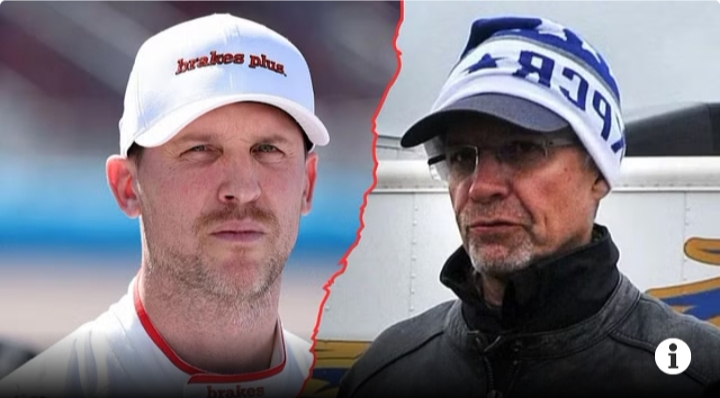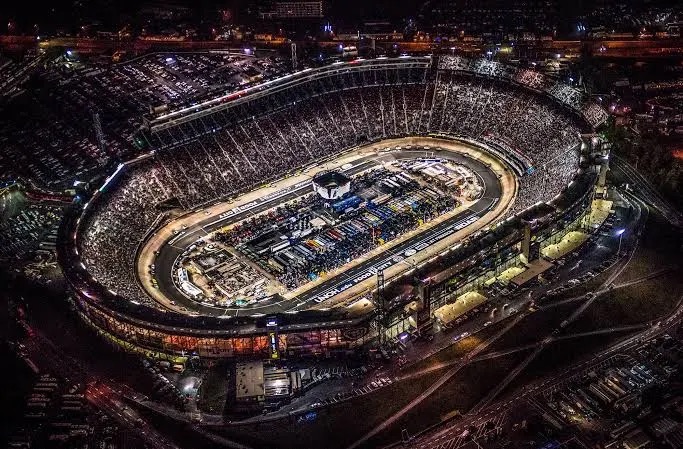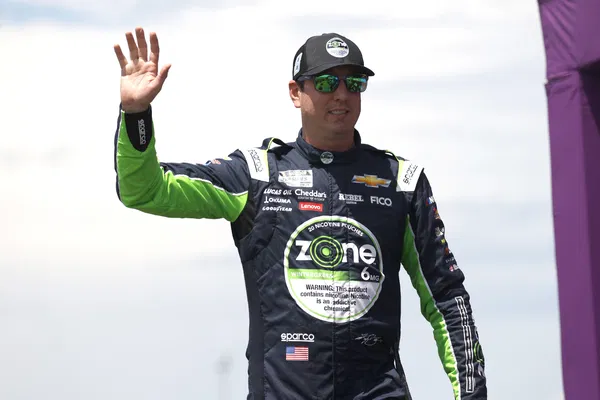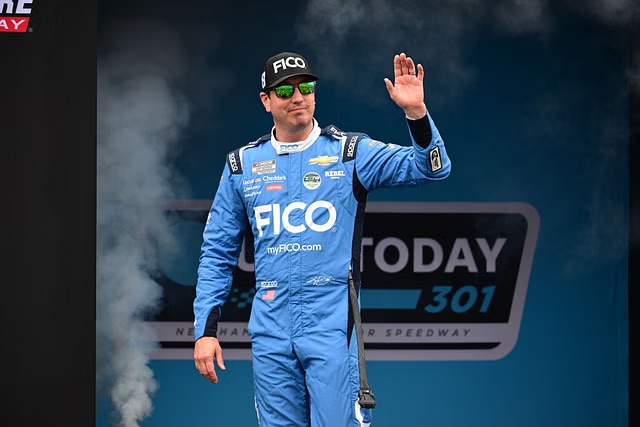Denny Hamlin has recently responded to Kyle Petty’s sharp criticism of his 20-point strategy at the Atlanta Motor Speedway. The Joe Gibbs Racing driver had a rough start to the Quaker State 400, facing a setback right from the beginning. Both Hamlin and his teammate, Martin Truex Jr., were forced to start at the back of the grid after a plug wire change post-qualifying.
While Martin Truex Jr. managed to regain ground during the race, finishing 9th in Stage 1 and 18th in Stage 2, Hamlin found himself struggling to keep up with the frontrunners. His performance in the initial stages saw him finish a disappointing 34th and 29th. However, things took a more chaotic turn as the race progressed, particularly during the final lap, when Chase Elliott collided with Ross Chastain. The collision triggered a multi-car crash, with Hamlin’s #11 Toyota among the victims.
After the race, Hamlin openly shared his strategy and expectations for the weekend. He revealed that he had anticipated more chaos at the 1.54-mile Atlanta track and aimed to collect 20 points from the race. His comments, however, sparked a critical response from former NASCAR driver and current commentator, Kyle Petty, who expressed disbelief at Hamlin’s focus on collecting points. Petty, in his critique, stated that he had never heard of such a strategy in NASCAR’s playoff history.
Hamlin didn’t shy away from addressing Petty’s remarks. He took to his podcast to explain his side of the story. Acknowledging that his strategy wasn’t perfect, Hamlin reasoned that given his struggles at superspeedways, he felt compelled to adopt a unique approach for his 27th race weekend of the season.
Hamlin admitted, “I’m not saying this was the best strategy, but it was the one I chose for the day. I can’t even remember the last time I scored 20 points in a superspeedway race, and my goal was to move ahead and focus on tracks where the chemistry between the team and driver is what really counts. It’s not all about luck and avoiding crashes,” Hamlin explained.
He went on to highlight the importance of data and analytics in modern racing, contrasting the technological advancements of today’s NASCAR with the racing era of Kyle Petty. Hamlin noted, “I understand that during Kyle’s time, analytics and data weren’t available the way they are now, but today, if you’re not using that information, you’re falling behind. I’m focused on using everything I have to make the best possible choices.” Unfortunately for Hamlin, his superspeedway performances this season haven’t lived up to expectations. He has yet to break into the top 10 on a superspeedway in 2024.
Hamlin further defended his cautious approach at Atlanta, underscoring the importance of steering clear of a subpar finish. His mindset, particularly on superspeedways, has come under scrutiny. But Hamlin was clear about his strategy going into the Atlanta race.
The 2024 season has been a rollercoaster for Hamlin. Despite several strong performances, including three wins, nine top-5 finishes, and 12 top-10s, his struggles on superspeedways continue to be a talking point. His season started with promise at the Daytona 500, where he qualified in 8th. However, he only managed a 19th-place finish in that race. Later, at Talladega, he qualified 23rd, but a crash on lap 156 saw him fail to finish the race.
The reconfiguration of Atlanta’s track surface between the 2021 and 2022 NASCAR seasons has made it similar to traditional superspeedway circuits like Daytona and Talladega. Given his prior struggles, Hamlin entered Atlanta with a defensive mindset. His last race at the track ended poorly, with him finishing 23rd. Thus, he was cautious about repeating that outcome.
Reflecting on his strategy, Hamlin shared his thoughts on defensive racing during the playoff opener. According to comments he made (via Frontstretch), Hamlin said, “My primary objective was to avoid finishing worse than 25th. On these superspeedways, I’ve been caught up in other drivers’ wrecks far too often in the Next Gen series. My goal today was to avoid that, but I still ended up caught in the final crash,” Hamlin said.
At present, Hamlin sits comfortably above the playoff cutline, maintaining a relatively secure position. However, his teammate, Martin Truex Jr., isn’t as fortunate. Truex Jr. finds himself teetering on the edge of elimination, currently sitting in 15th place in the playoff standings.
In essence, Hamlin’s response to Kyle Petty reveals a driver who is aware of his limitations on certain tracks, particularly superspeedways. He knows that his performances on these tracks have been far from stellar this season, but his focus is on playing the long game. By prioritizing points and adopting a defensive racing style, Hamlin is looking to stay in contention, even if it means taking a more conservative approach.
While Kyle Petty’s critique might stem from a more traditional perspective on racing, Hamlin’s approach is emblematic of the modern NASCAR era, where data, strategy, and analytics play an increasingly crucial role. Hamlin’s belief in using all the tools at his disposal, particularly in an era where avoiding wrecks can sometimes feel like a game of chance, shows a driver determined to evolve with the times.
Hamlin’s cautious approach to superspeedways is understandable given his history on these tracks, and despite the criticism, his focus remains on advancing in the playoffs. As the season progresses, it will be interesting to see whether Hamlin’s strategy pays off and if he can improve his performance on the superspeedways. One thing is for certain: Hamlin isn’t content with merely participating—he’s playing to win, even if that means adopting a strategy that not everyone understands or agrees with.




